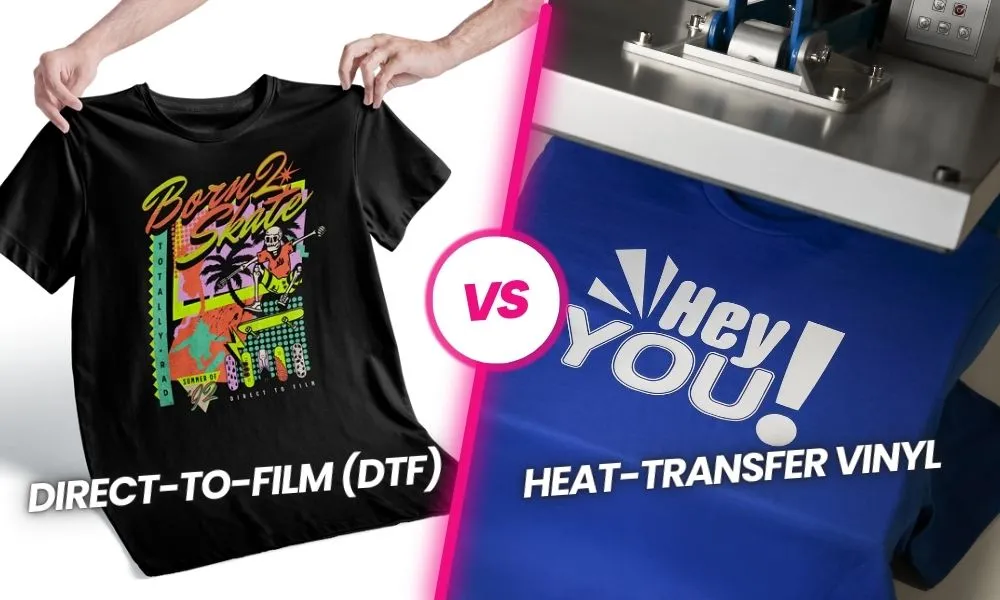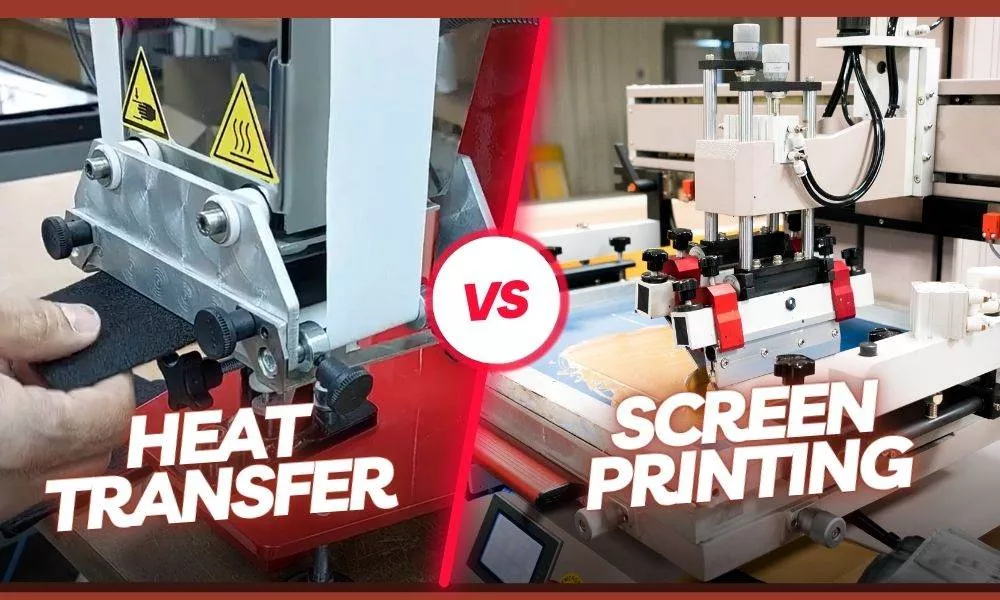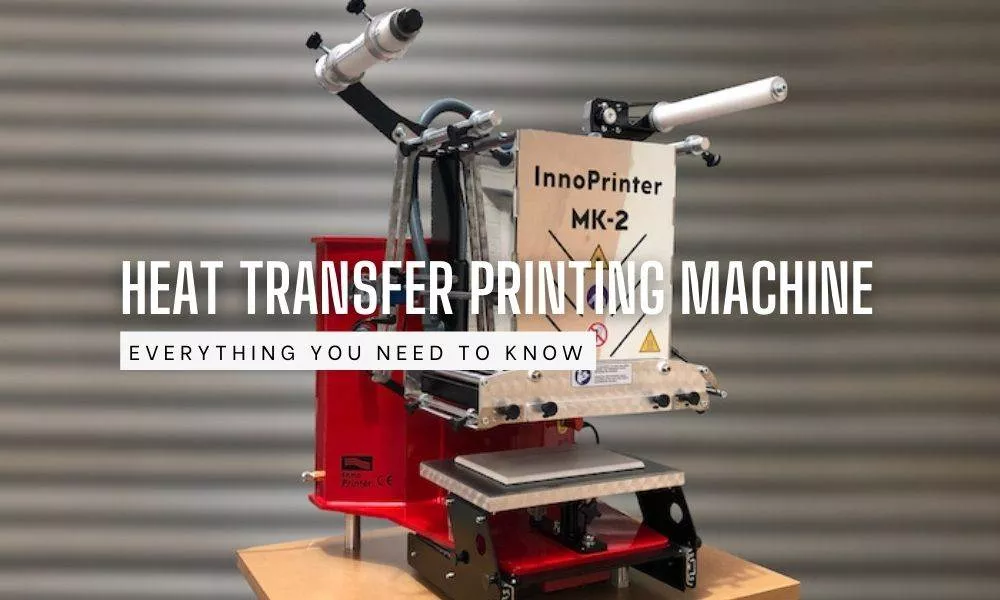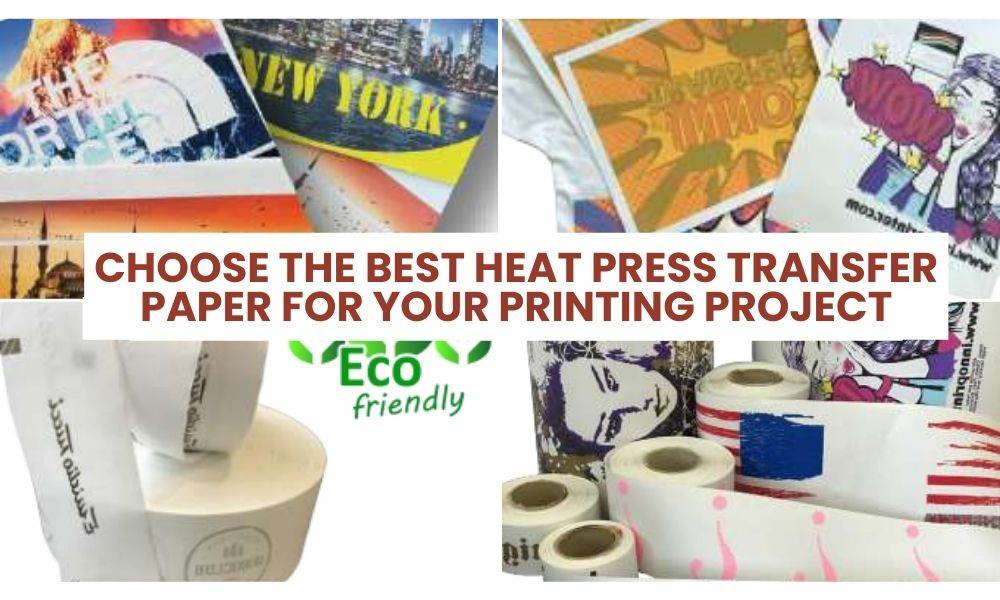The world of custom apparel and merchandise has exploded in recent years. From personalized t-shirts to branded tote bags, the ability to add a unique touch to textiles has become increasingly accessible.
But with this accessibility comes a crucial question: what printing method reigns supreme? Two contenders have emerged at the forefront – Direct-to-Film (DTF) and Heat-Transfer Vinyl (HTV).
Both offer vibrant colors and a path to creative expression, but they cater to distinct needs. Let’s delve into the nitty-gritty of DTF vs. Heat-Transfer Vinyl to help you crown the champion for your customization projects.
What is HTV
HTV is either cut or printed and then cut to the desired shape using a vinyl cutter or eco-solvent printer/cutter. The design is then adhered to an item using heat and pressure after the excess has been removed or weeded.
Strengths of HTV:
- Cost-effective: For small projects or personal use, HTV boasts a lower initial investment. Vinyl sheets are relatively inexpensive, and a basic heat press can be found at affordable prices.
- User-friendly: Working with HTV is a relatively straightforward process. You can use pre-cut designs or create your own using a vinyl cutter. Weeding (removing excess vinyl) requires some patience, but overall, HTV offers a beginner-friendly experience.
- Versatility: HTV comes in a vast array of colours, textures, and finishes. You can find metallic, holographic, and even heat-activated glow-in-the-dark options, allowing for creative exploration.
- Suitable for small orders: If you’re making a handful of personalized t-shirts or customizing hats, HTV excels for smaller quantities.
Weaknesses of HTV:
- Limited design complexity: HTV struggles with intricate designs, especially those with fine details or small lettering. Weeding becomes increasingly challenging with complex artwork, and the risk of losing tiny vinyl pieces increases.
- Durability concerns: While HTV can produce long-lasting results with proper care, it might not withstand vigorous washing or harsh drying conditions as well as other methods.
- Layering limitations: Layering multiple colours of HTV can be tricky and often leads to a bulky feel on the fabric.
What is DTF
DTF printing is a rising star in the customization game. Inkjet printers are used in the multi-step garment decoration technique known as “direct-to-film” (DTF) printing, which involves applying ink to PET (polyethylene terephthalate) films.
The print is then covered with an adhesive and heated to a high temperature to cure it. The PET film can be kept for extended periods of time without experiencing a noticeable reduction in image quality thanks to this curing process.
Strengths of DTF:
- Unmatched design detail: DTF printing excels at handling intricate designs and photorealistic images. Full-color gradients, fine lines, and small text are all achievable with exceptional quality.
- Superior durability: DTF prints boast excellent wash resistance and can withstand higher temperatures than HTV. This makes them ideal for frequently washed items like athletic wear or work uniforms.
- Wider application range: DTF printing isn’t limited to just textiles. It can be used to customize a broader range of materials, including wood, leather, and even shoes.
- No weeding required: Unlike HTV, DTF eliminates the tedious weeding process. The design is printed directly onto a film, which is then transferred to the fabric, saving you time and frustration.
Weaknesses of DTF:
- Higher initial investment: Compared to HTV, setting up a DTF printing system requires a more significant upfront cost. The printer, ink, and pre-treatment solutions can be a financial hurdle for beginners.
- Learning curve: Operating a DTF printer involves a slightly steeper learning curve compared to HTV. While the basic concept is similar (heat press application), mastering the printing process and ink management takes some practice.
- Bulkier feel for some prints: The DTF process involves applying a layer of adhesive powder to the film before transferring it to the fabric. This can sometimes leave a slightly thicker feel compared to a thin layer of HTV.
So, Which One Should You Choose?
The champion for your customization needs depends on your specific project requirements and priorities. Here’s a quick guide to help you decide:
Choose HTV if:
- You’re on a budget and starting small.
- You need to create a simple design or use a limited colour palette.
- You prefer a DIY approach and enjoy the hands-on process.
Choose DTF if:
- You demand high-resolution, photorealistic prints with intricate details.
- You need durable prints for frequently washed items.
- You want the flexibility to customize a wider range of materials beyond just fabrics.
- You’re willing to invest in a more advanced printing setup for higher volume production.
Beyond the Basics: Additional Factors to Consider
While HTV and DTF are the frontrunners, a few other factors deserve consideration before making your final decision:
- Production Volume: For high-volume projects, DTF’s efficiency and speed become more advantageous. HTV might be suitable for occasional customization, but DTF can streamline production for larger quantities.
- Fabric Type: Both HTV and DTF work best on specific fabrics. HTV adheres best to cotton or cotton-blend materials, while DTF offers better adhesion to a wider range of fabrics, including synthetics. Always test your chosen method on a scrap piece of fabric before working on your final project.
- Environmental Impact: DTF inks are generally considered more eco-friendly than traditional HTV materials. However, the DTF process does involve additional pre-treatment solutions, so a full life-cycle assessment is recommended.
The Final Verdict: It’s Not Always Black and White
The battle between DTF and HTV isn’t always a clear-cut victory for one over the other. Here are some scenarios where you might leverage both methods:
- Small, Simple Designs with a Budget: HTV remains an excellent choice for creating a basic design on a few t-shirts.
- High-Volume Production with Complex Designs: DTF shines when you need to produce a large number of items with intricate details.
- A Hybrid Approach: For a project with a mix of simple and complex elements, you could utilize both methods. Use HTV for solid colors or simple logos and DTF for photorealistic images or detailed artwork.
Ultimately, the best printing method depends on your specific needs and preferences. Consider the factors discussed above, experiment with both techniques if possible, and choose the champion that empowers you to bring your creative vision to life!



